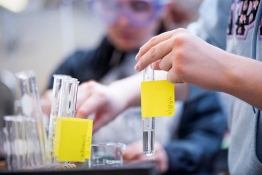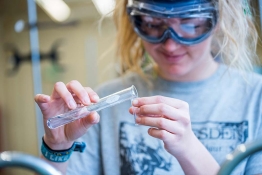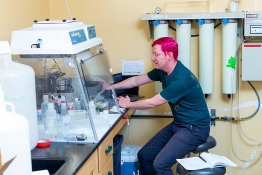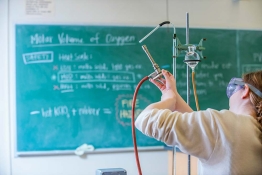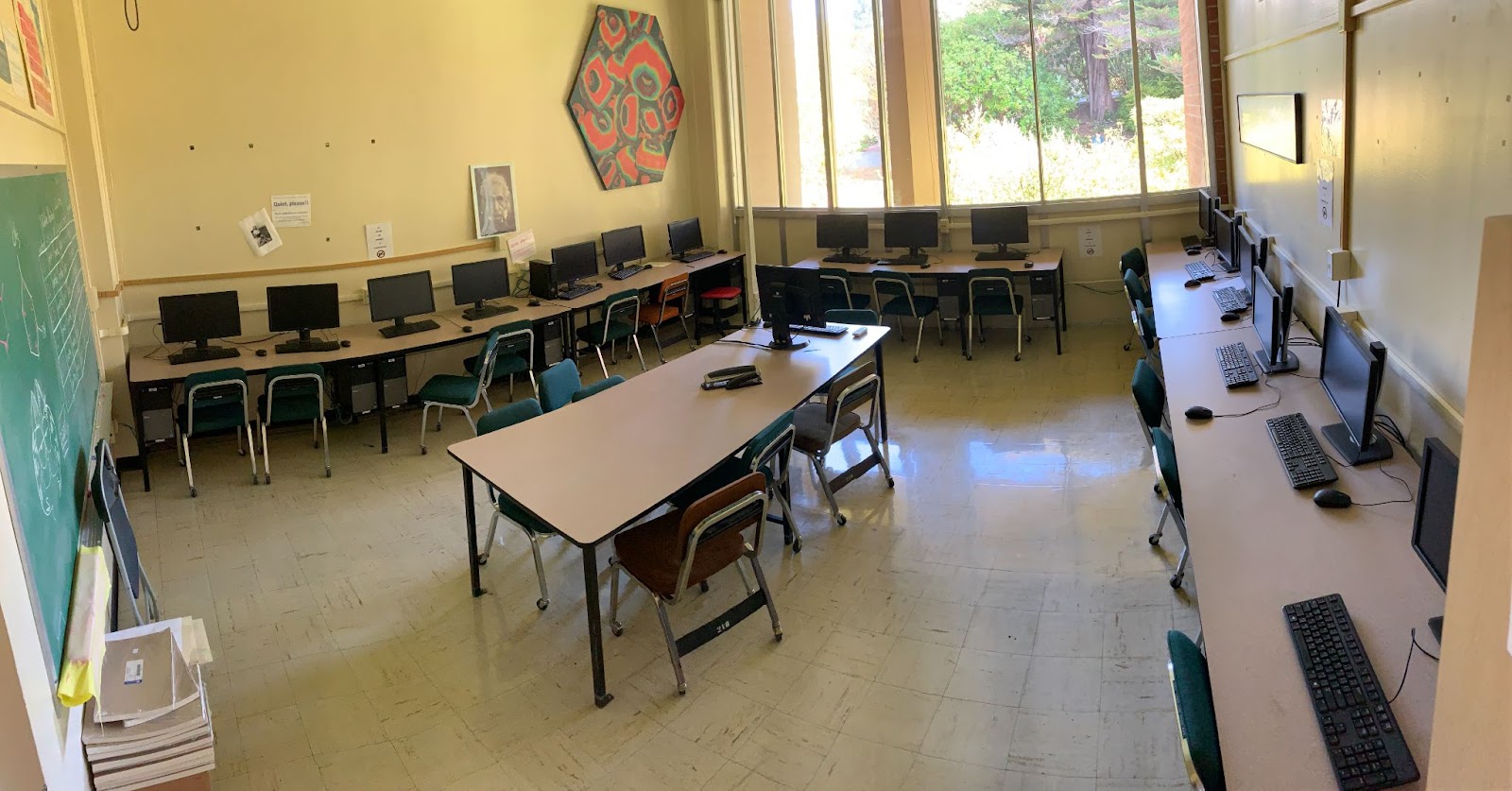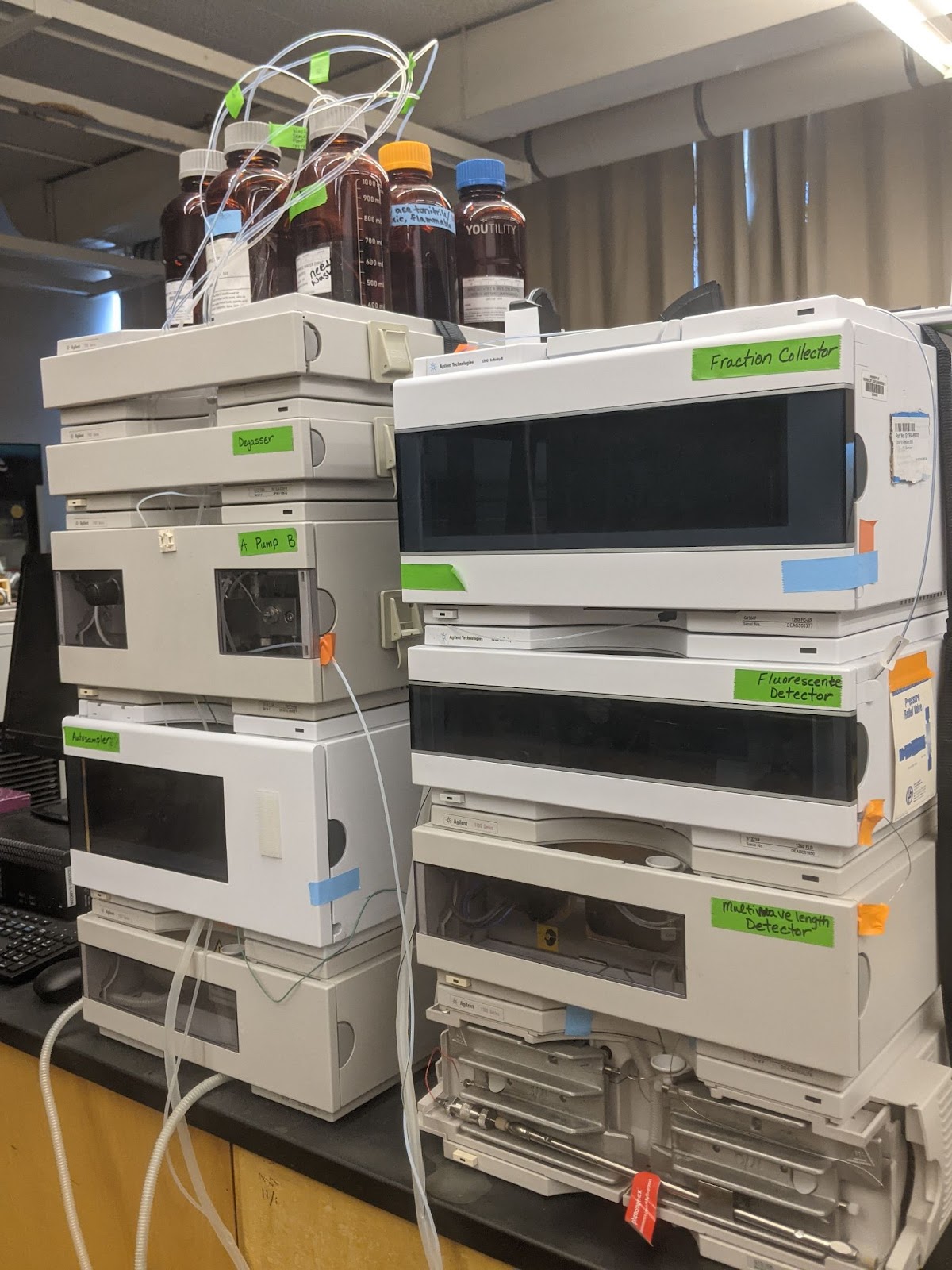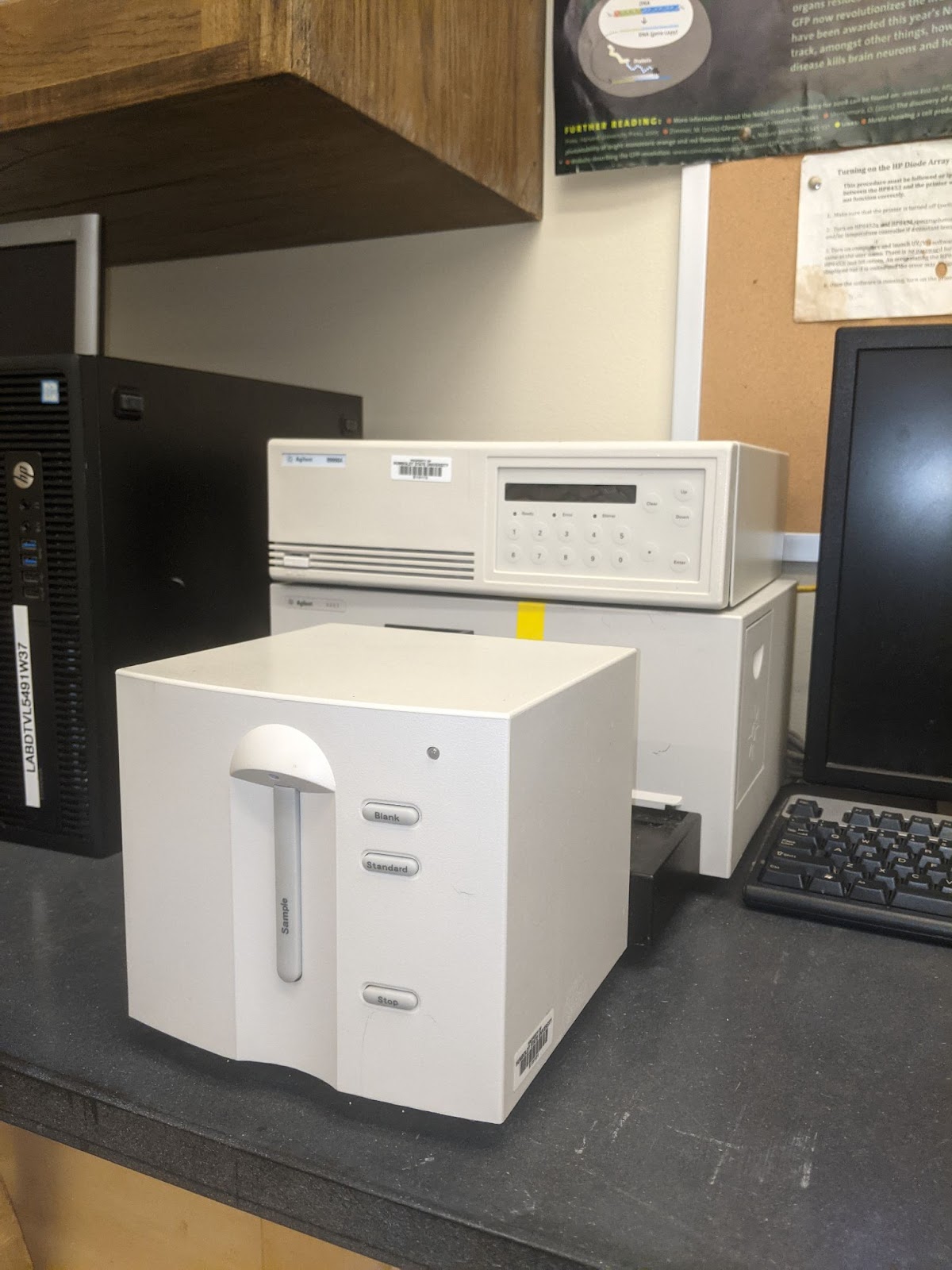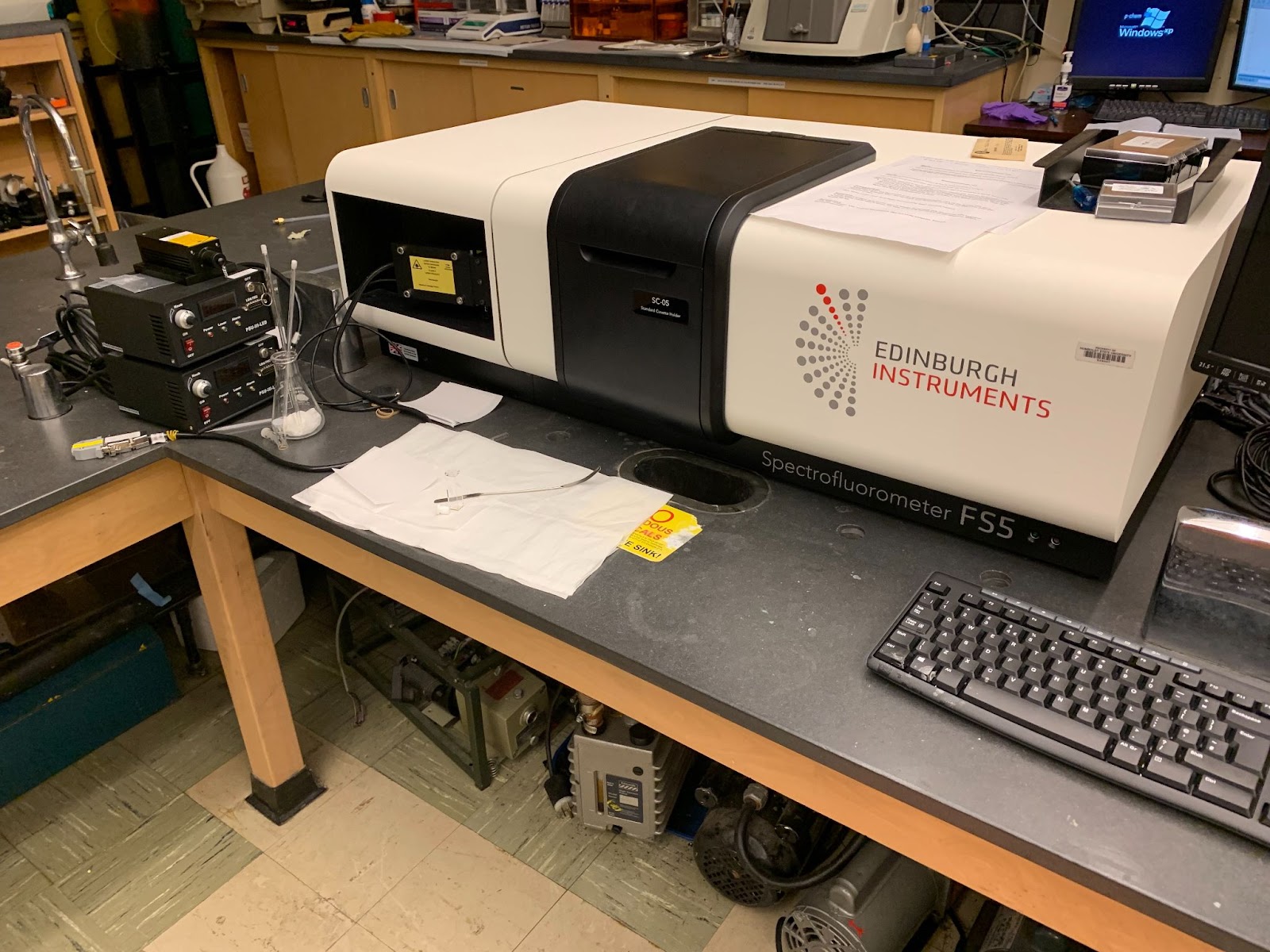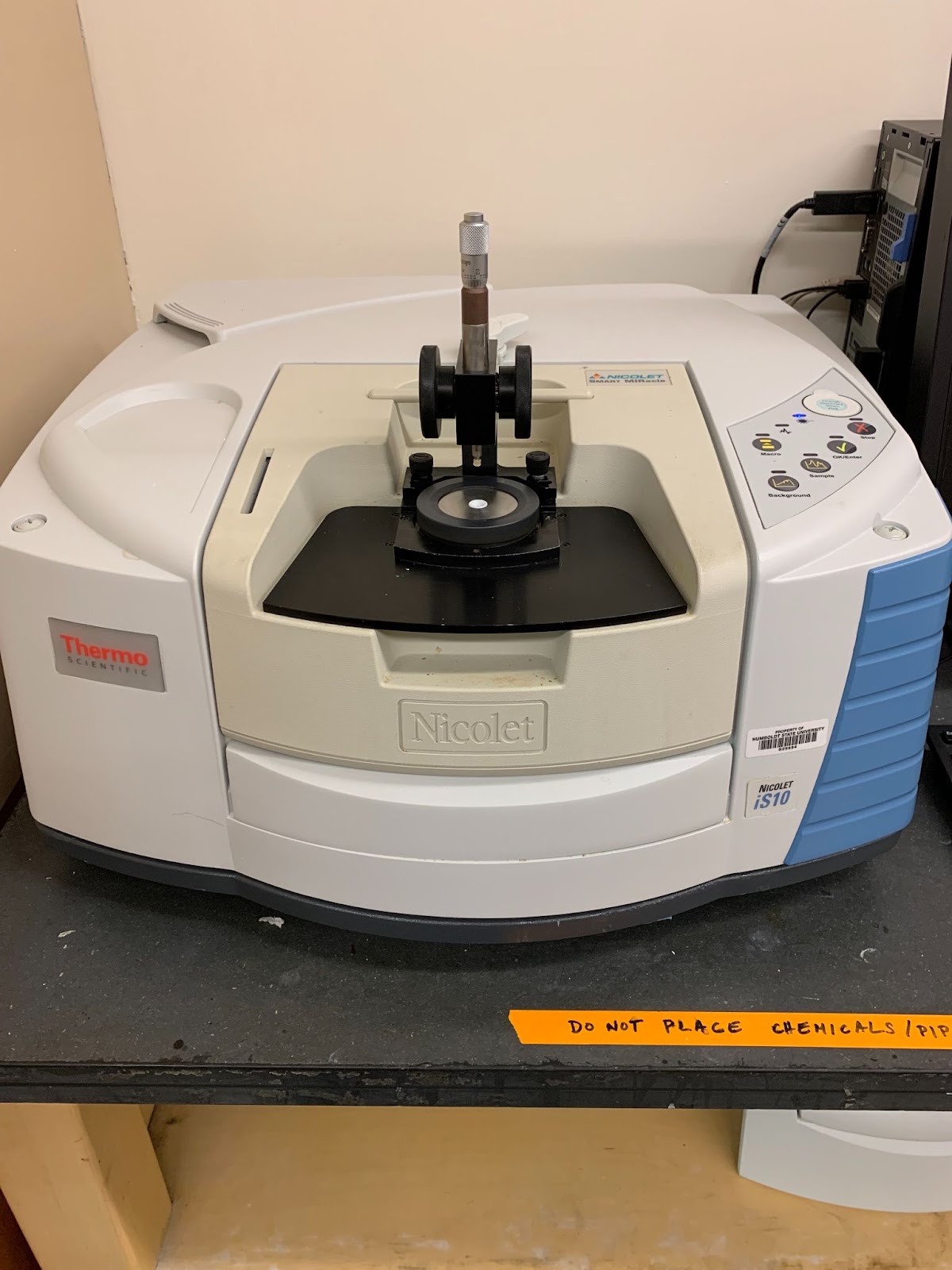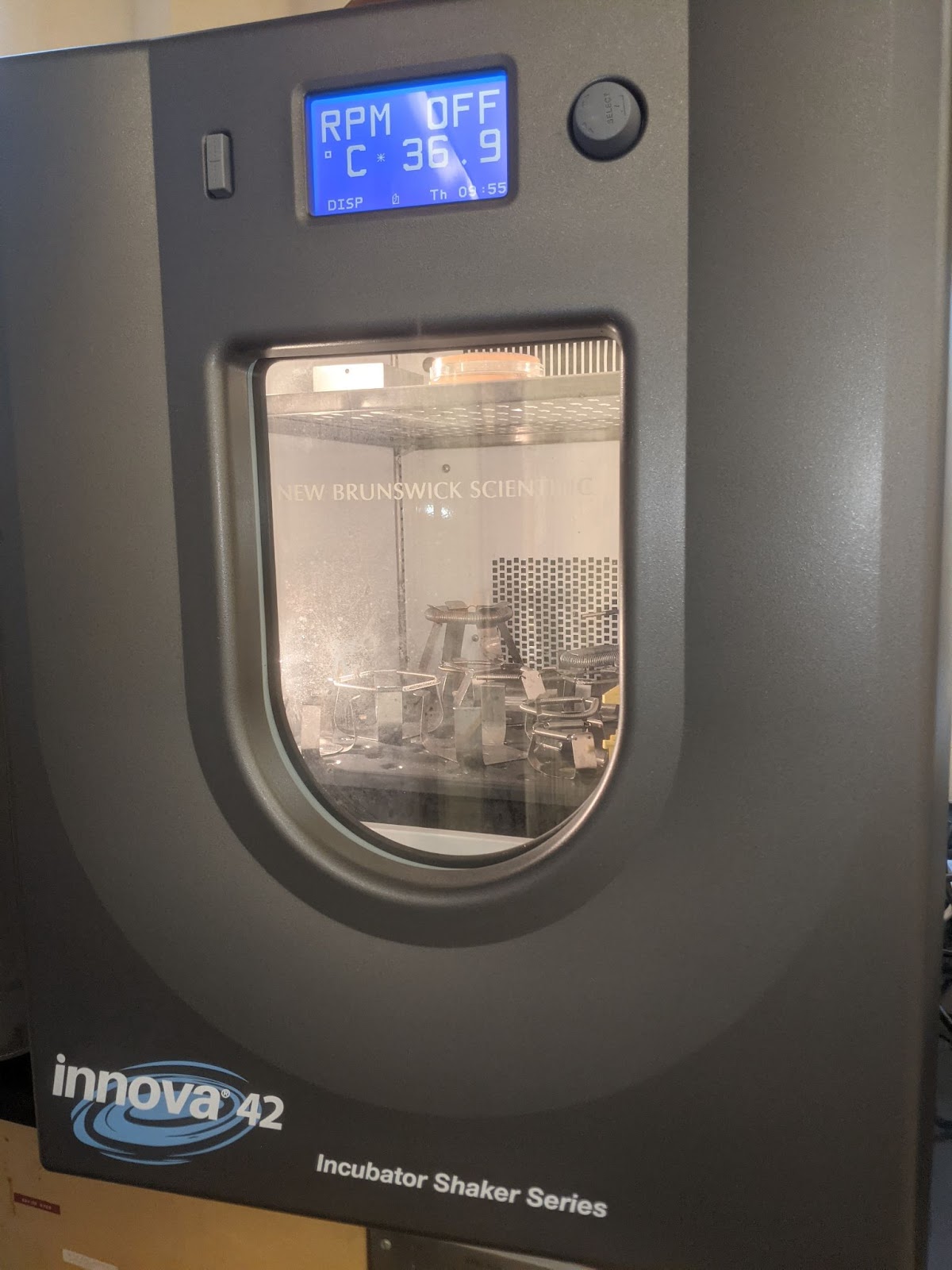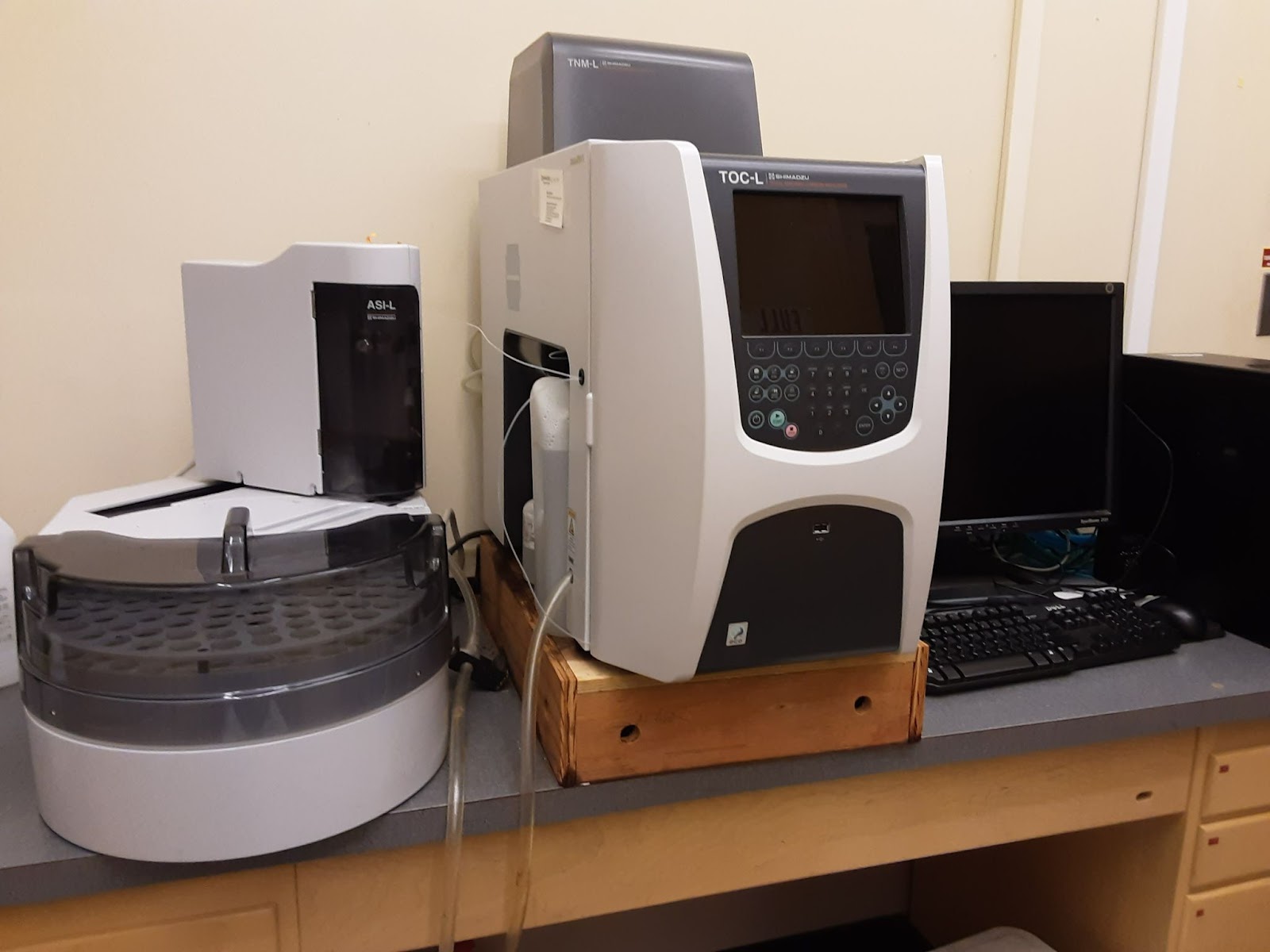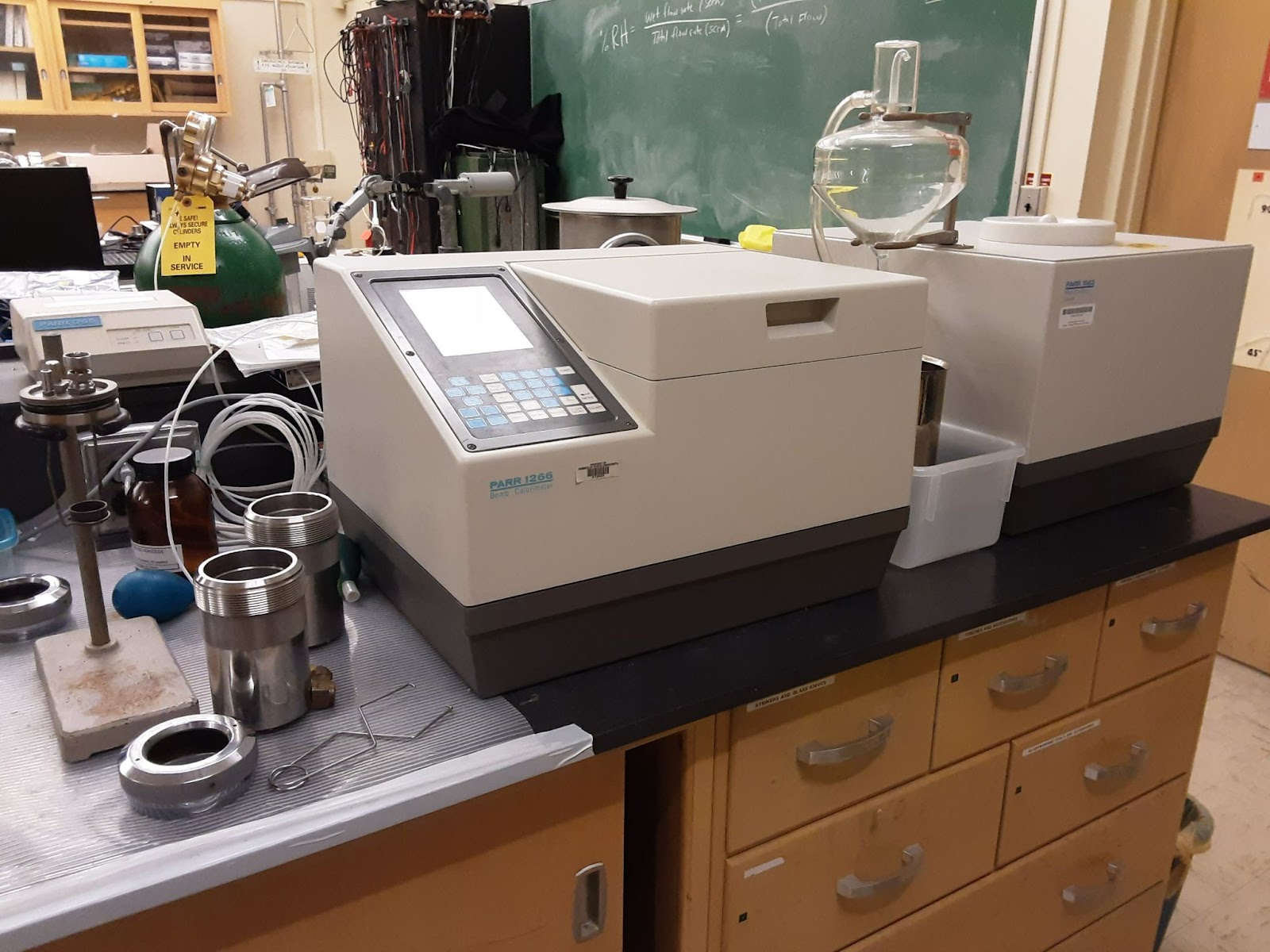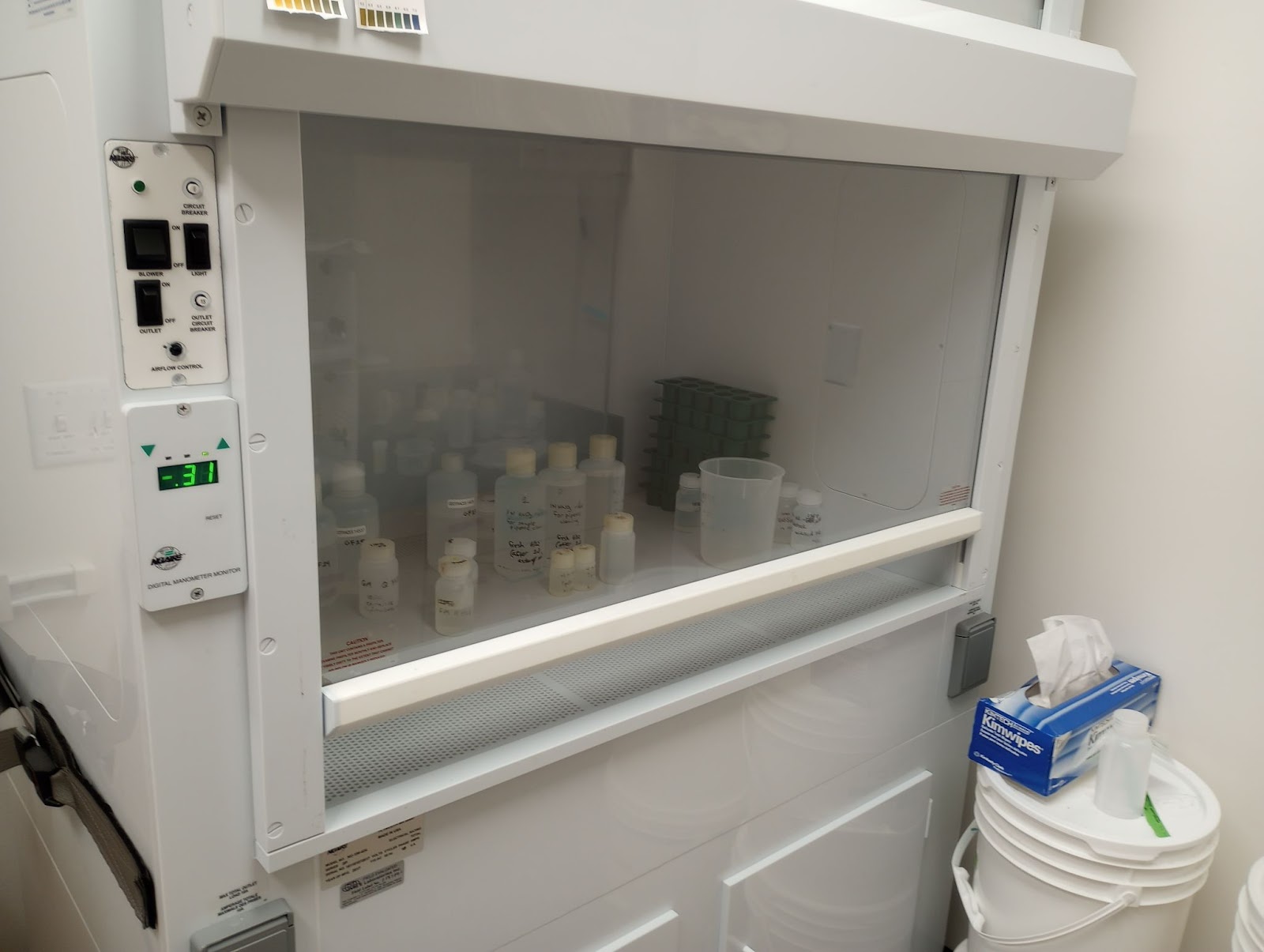Instrumentation
At Humboldt, students go beyond the books and gain real-world experience using on-and off-campus facilities for lab work and research.
HPLC
Agilent 1100 High Performance Liquid Chromatography instrument. The Agilent 1100 is a robust system configured with components including an autosampler, vacuum degasser, fraction collector and multiwavelength and fluorescent detectors . The Agilent binary pump provides high-pressure mixing and gradient generation. This instrument is used in our upper division laboratory courses in instrumental analysis, CHEM 440 and biochemistry, CHEM 435L as well as student research in our department.
Spectrofluorometer
Edinburgh FS5 spectrofluorometer with UV-Vis working range and capabilities to run samples in solution or solid state at room temperature or 77 K. The spectrofluorometer is equipped with two auxiliary CW lasers centered at 975 and 880 nm and a Xe pulsed lamp to acquire excited state lifetimes and time-resolved spectra. All chemistry majors use this equipment in analytical chemistry and inorganic chemistry.
Teledyne Flash Chromatography
Teledyne CombiFlash that allows quick purification of mixture of compounds. This system allows the use of a gradient of two solvents and silica, alumina, or C18 columns. The system is equipped with a UV detector and automatically separates the different fractions.
Ultracentrifuge and Refrigerated Centrifuge
Biochemistry students utilize centrifugation extensively to separate biomolecules. We have a variety of centrifuges for this purpose. This includes a Beckman TL-100 Ultracentrifuge that can perform separations at greater than 100,000 x gravity, several benchtop microcentrifuges including two Eppendorf 5430 R refrigerated models
Bioanalytical Systems Epsilon Voltammetric Analyzers and Cell Stands
The Analytical Lab has various electrochemical equipment for voltammetry. The controlled growth mercury electrodes (CGME) are primarily used in trace metal research and by students in Instrumental Analysis, CHEM 441, and in undergraduate research.
Parr 1266 Adiabatic Constant Volume Bomb Calorimeter
The Parr instruments adiabtic constant volume bomb calorimeter comes with a water handling system (Parr 1563) to maintain constant temperature in the adiabtic water bath. Students routinely use this instrument in physical chemistry (CHEM 363) to analyze the heat of combustion of various materials. The instrument is also available to properly trained researchers.
ISO 8 Clean Room for Trace Metal Research
The ISO 8 clean room is primarily for chemical oceanographic research and the study of trace metals in the environment. Students use the facility under the supervision of Dr. Claire Till. This research also incorporates students participating in field work in coastal waters and estuaries.
CNRS Core Research Facility
The CNRS Core provides a shared/community scientific laboratory workspace where specialized equipment and instrumentation as well as limited bench space for training and research projects is located. CNRS Core resources are maintained through the CNRS and University for use by faculty or students working on faculty sponsored research projects which may originate through a class or a grant. The CNRS Core is a community workspace, however access must be obtained from the CNRS Core Research Facility administrator (cnrs.core@humboldt.edu) prior to performing any work. The hours work may be performed in the CNRS Core are between 8 am and 5 pm Monday through Friday, please plan your work accordingly.
CNRS Core Research Facility website »

